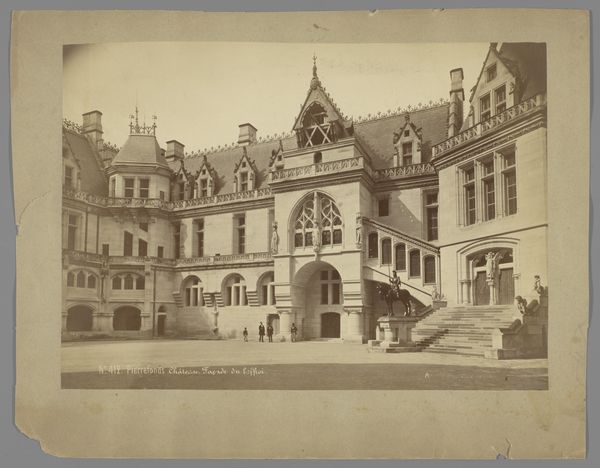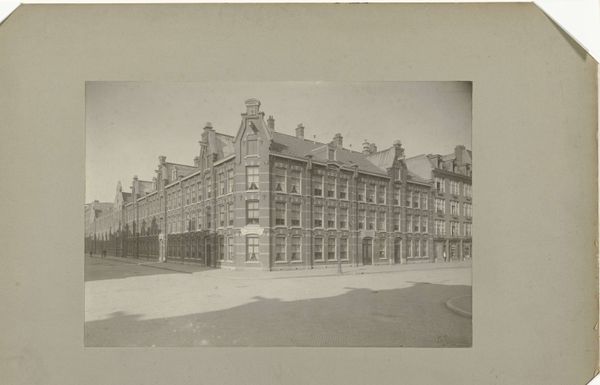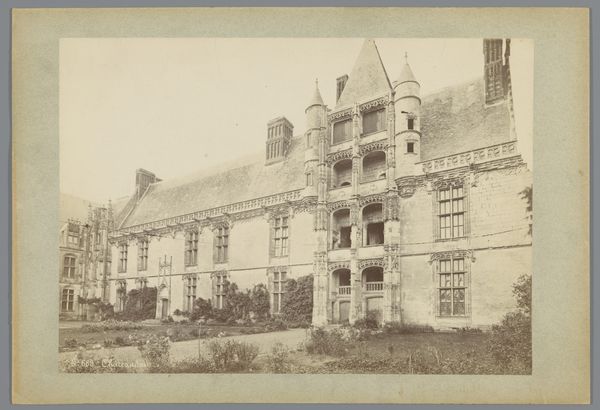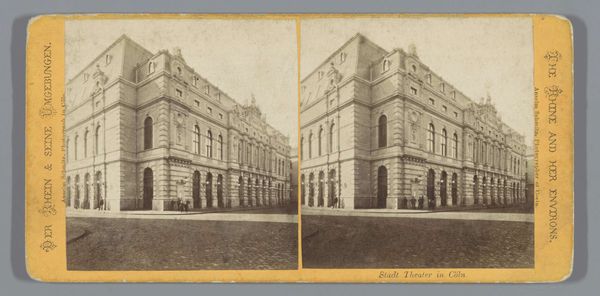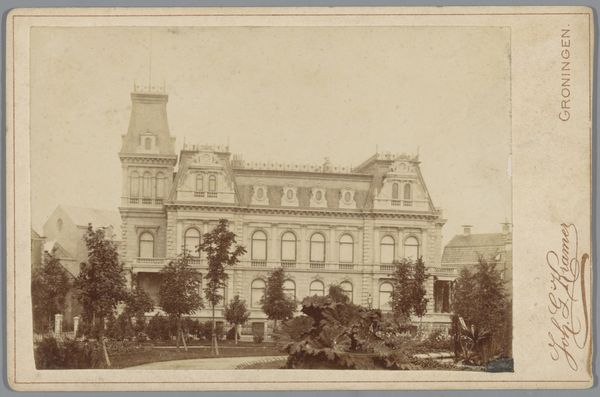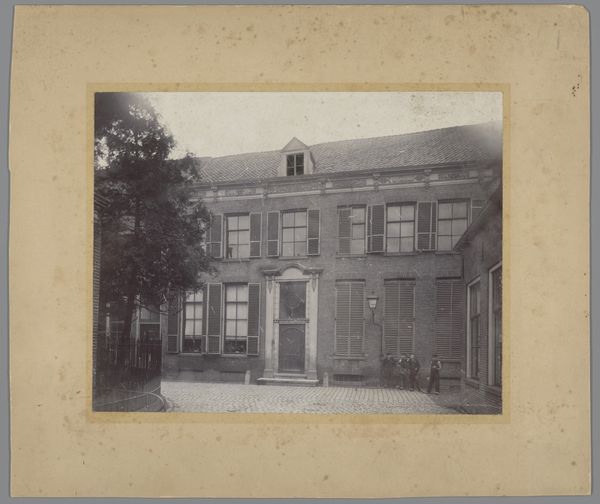
Gezicht op het weeshuis van de diaconie der Nederduitse Gereformeerde Kerk in Amsterdam 1891 - 1900
0:00
0:00
photography, gelatin-silver-print
#
portrait
#
dutch-golden-age
#
photography
#
coloured pencil
#
gelatin-silver-print
#
cityscape
#
watercolor
#
realism
Dimensions: height 108 mm, width 166 mm
Copyright: Rijks Museum: Open Domain
Andreas Theodorus Rooswinkel made this albumen print of the Weeshuis, or orphanage, of the Nederduitse Gereformeerde Kerk in Amsterdam. The albumen print process, popular in the 19th century, involved coating paper with egg white and silver nitrate. The resulting surface was light sensitive. This process allowed for sharp, detailed images, but required careful preparation and handling. The sepia tone comes from the materials used in the printing. The photograph shows a large, imposing brick building, which speaks volumes about social context. The orphanage is solid and well-maintained, reflecting the values of the church. The building materials – brick and stone – suggest permanence and stability, while the relatively slow photographic process indicates the patience required for capturing this image. The labor involved in constructing the building and producing the photograph is significant, representing both skilled craftsmanship and the social structures of the time. Looking closely at the materials and making of this image allows us to consider how social institutions were represented through photography.
Comments
No comments
Be the first to comment and join the conversation on the ultimate creative platform.
